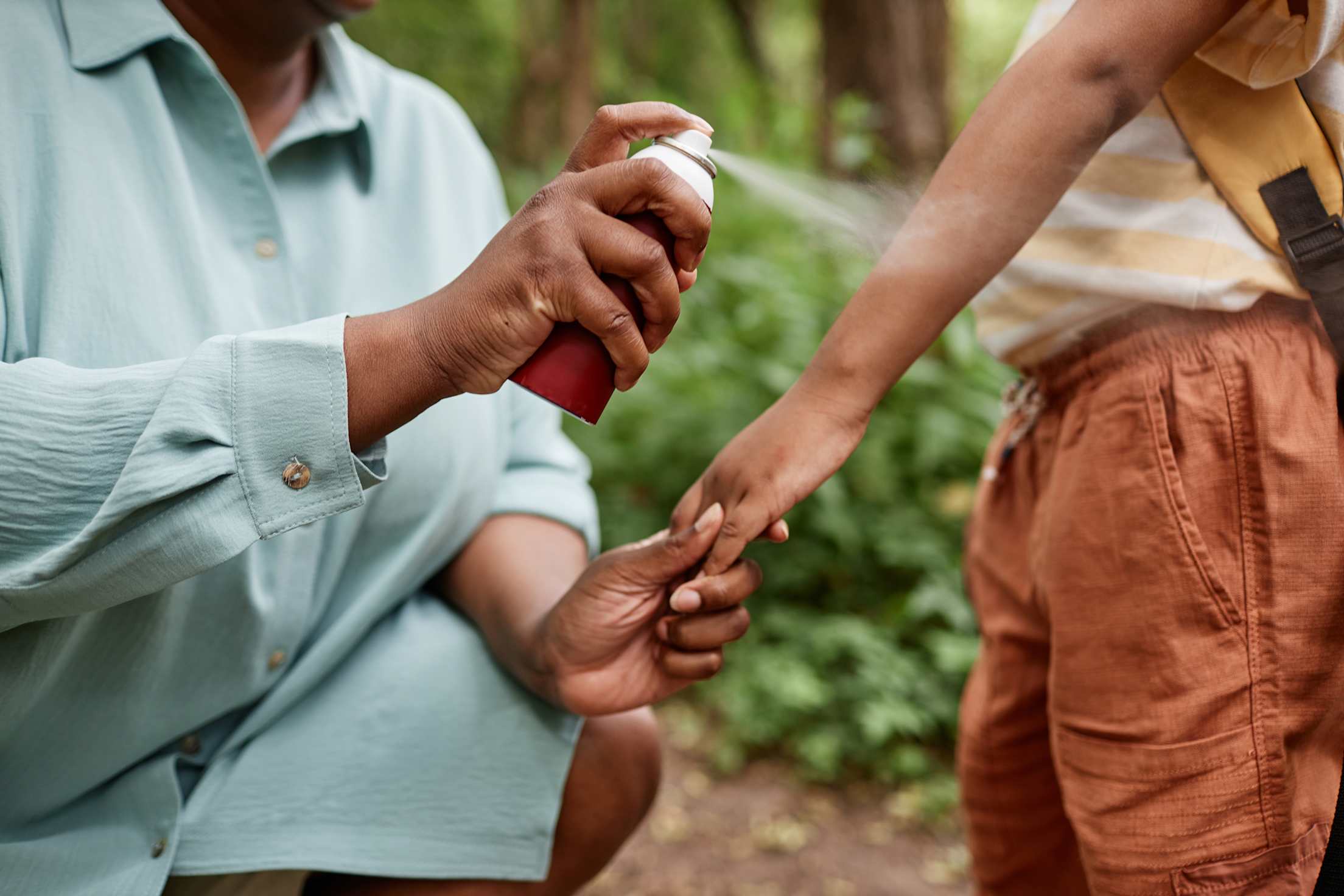
Essential Tips to Prevent Ticks and Lyme Disease
Follow these simple strategies to keep ticks at bay, plus what to do if you find one.

Whether you hike, camp, garden, or have pets that go outside, ticks are a cause for concern, since they can carry and transmit disease when they bite. “Not every tick is necessarily infected with a pathogen,” says Jim Fredericks, chief entomologist for the National Pest Management Association. But nearly all commonly found tick species can transmit disease-causing pathogens to humans, including Lyme disease, Rocky Mountain spotted fever, Colorado tick fever, and others.
If you live in the West, here’s what you need to know about the ticks found here, along with simple steps to avoid them.
Ticks Found in the Western States
- Brown dog tick is found throughout the United States. “It's especially common in the southern states,” Fredericks says. In the Southwest, brown dog ticks can transmit Rocky Mountain spotted fever, a bacterial disease.
- Rocky mountain wood tick is found across Rocky Mountain states and their neighbors, including Washington, Oregon, Idaho, Montana, Wyoming, Colorado, Utah, and Nevada, and even into northern parts of Arizona and New Mexico. This tick is found at higher elevations, but not deserts, Fredericks says. It transmits Rocky Mountain spotted fever, Colorado tick fever, and tularemia.
- Western black-legged tick is found in the coastal regions of Washington and Oregon and throughout most of California. It’s also often called a bear tick, Fredericks notes, and it is capable of transmitting Lyme disease as well as the tickborne disease anaplasmosis and tick-relapsing fever.

How to Avoid Ticks
Most ticks are outdoor creatures. (The brown dog tick—which can infest buildings and is often found in dog shelters and pet boarding facilities, where it can easily feast—is an exception, Fredericks says.)
But just because ticks are mainly found outside doesn’t mean you should avoid time in nature, Fredericks says. “Get outside and enjoy the outdoors,” he says. Just take a few sensible precautions.
Know where ticks like to live.
Ticks are often found in high grass, or the “scrubby transitional areas between a field and the woods,” Fredericks says. If you enter these areas, you’ll want to be particularly mindful when you do your tick check (more on that below).
They’re less likely to be on a trail or a well-cut field, Fredericks says. If you’re going on a hike, stick to the center of the trail, he recommends.
Wear the right clothes, and use repellent.
When possible, opt for light-colored garments and tall socks to make it easier to spot ticks, which are dark-colored, and keep them off your skin.
“In the middle of the summer, it's awfully hard to wear long pants and long sleeves when you’re out on a hike,” Fredericks says. That’s when you can turn to the protection of tick repellents.
Look for one with DEET. (The Environmental Protection Agency has a search tool to help you find a suitable repellent.) Along with spraying repellent on your body, you can also treat your clothing with a repellent containing permethrin, or purchase permethrin-treated garments.
Whatever repellents you opt to use, “make sure to read and follow label instructions,” Fredericks says.

Don’t forget about your pet.
Ticks will bite your pets, too. If your dog is frequently in areas where ticks make their home, talk to your veterinarian about available treatment options, Fredericks recommends. Here, too, you’ll want to follow any instructions on the label, and make sure you’re purchasing an option that’s tailored for your dog’s size.
Once you’re back from areas that may have ticks, check your pet. In particular, look behind their ears, around their eyelids, under their collar, between their toes, and around their tail, according to the Centers for Disease Control and Prevention (CDC). You should also check between their back and front legs.
“It’s hard to find a tick on a pet, because of the hair,” Fredericks notes. “But it’s a great opportunity to spend some time loving on your pet a bit.”
Have your yard treated.
If your outdoor space abuts a wooded or overgrown area or you live in a more suburban or rural area, you may want to consider using pesticides.
“Pest control pros have services that they can provide to help reduce the ticks in those areas,” Fredericks says. That can be particularly helpful since you may be vigilant about ticks when you go for a hike, but less attentive when you’re throwing a frisbee in your yard, he says.
You can also take steps to make your yard less hospitable to ticks, including mowing frequently and creating a three-foot barrier between your lawn and wooded areas using wood chips or gravel, according to the experts at the CDC.
How to Do a Tick Check After Time in Tick-Infested Areas
In addition to taking preventative steps, you should check for ticks when you’re done with outdoor activities.
“Oftentimes ticks will be found crawling on the body before they actually begin to feed,” Fredericks says. So the sooner you check for ticks, the better—if you catch them before they bite, you can avert potential problems.
An easy first step is to take a shower, Fredericks says. Any ticks that are on your body, but haven’t bitten you yet, will wash away in the water.
Then, inspect your skin for ticks. This is easiest if you’re fully naked, since you’ll want to look everywhere: between your toes, in your belly button, and under your waist, to name just a few spots. You should also examine your backpack, coat, and anything else you brought with you to the outdoors. You can put clothes in the dryer on high heat for 10 minutes to kill any hitchhikers. If you have children, take the same steps to find ticks on their body as you do on your own.
What to Do if You Find a Tick
First, don’t panic. Yes, these parasitic creatures transmit some nasty diseases. But, removing them is fairly straightforward, and not every tick is carrying a disease.
For unattached ticks, simply remove them with your hands. If they’ve bitten you and are clinging on your skin, safely remove them.
- Get a pair of tweezers, and grasp the tick behind its head with the tweezers (do not grab its body).
- Use a steady, gentle pressure, pull it straight up (do not yank, wiggle, or twist).
- Wash the area with soap and water.
Once you’ve removed the tick, you can flush it, wrap it in tape or a small sealable bag or container, or put it in alcohol. Do not crush it with your hands, as this can spread disease. If you find and remove the tick quickly, that’s often the end of the situation; ticks typically need to be attached for more than 24 hours before transmitting Lyme disease, for example.
If you’ve been bitten by a tick, be on the lookout for common symptoms of Lyme disease and other tick-borne illnesses such as headache, aches and pains, or fever. Rashes are another common tipoff; in particular, the majority of people with Lyme disease will get a telltale bullseye rash. If you have these symptoms within four weeks of your tick bite, reach out to your health care provider, who may prescribe you an antibiotic for treatment.